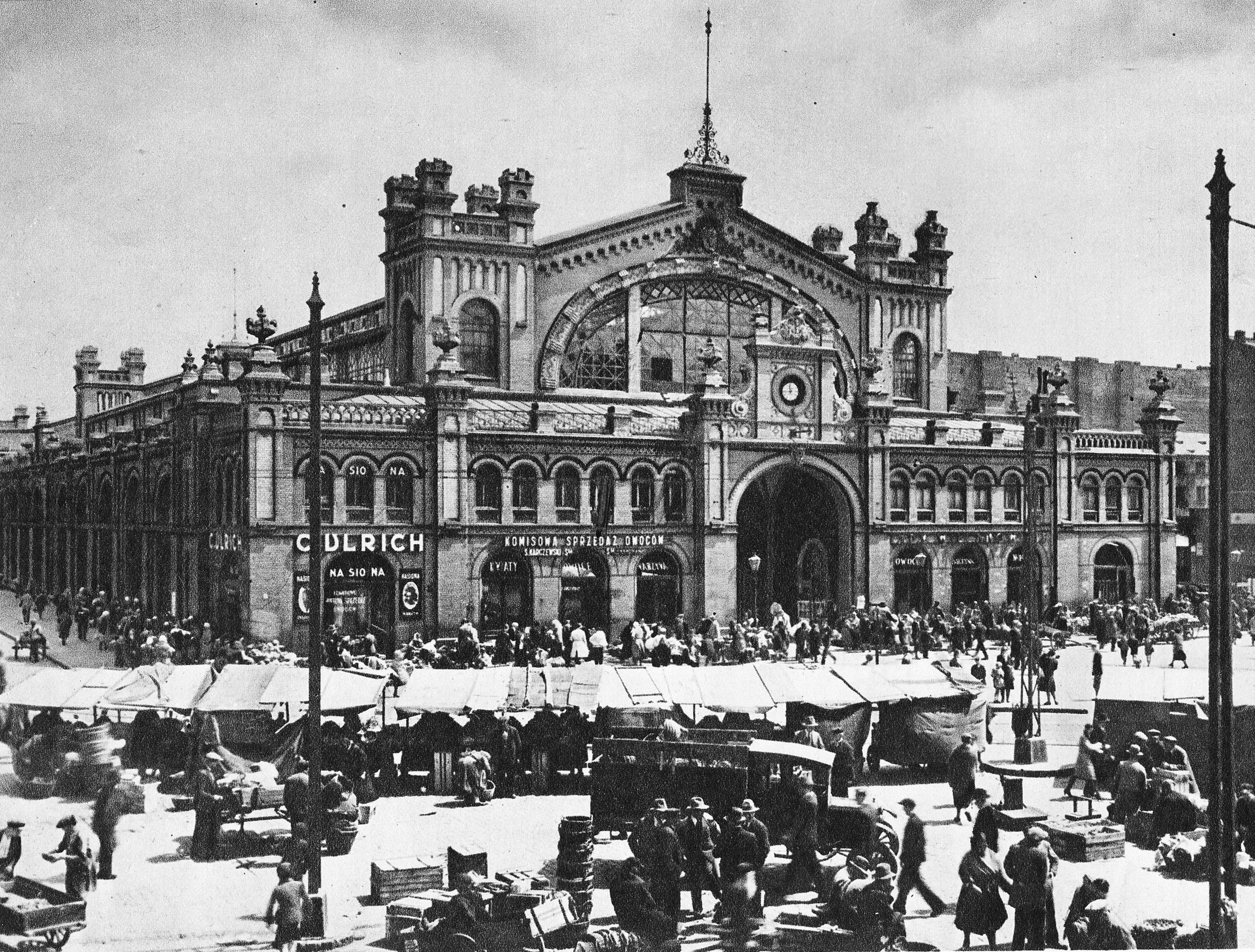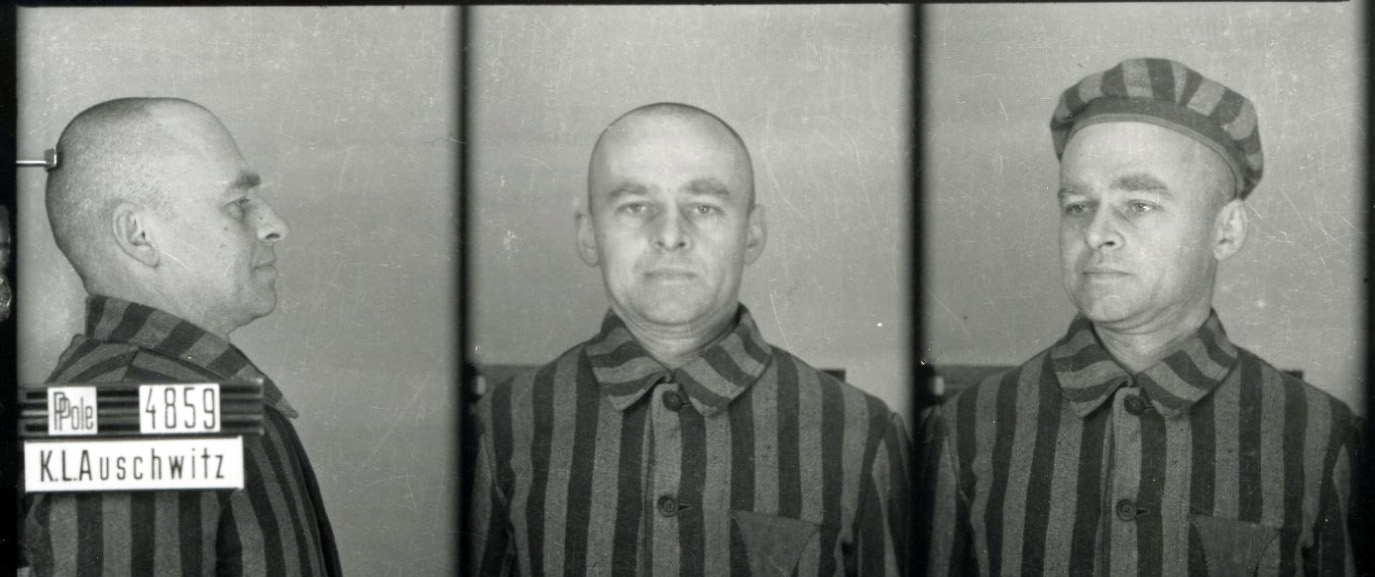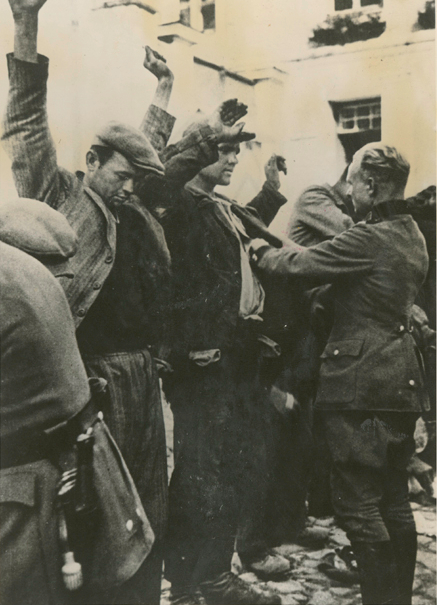|
Stanisław Gustaw Jaster
Stanisław Gustaw Jaster, codenamed ''Hel'' (; born 1 January 1921 in Lviv, died after 12 July 1943 in Warsaw) was a Polish scout, an escapee from the Auschwitz concentration camp, and a soldier of the Home Army. He went missing under unexplained circumstances after 12 July 1943; presumably murdered by fellow conspirators. In 1968, he was accused by of collaborating with the Gestapo and causing the Disbandment of Osa–Kosa 30, dismantling of the special unit Osa–Kosa 30, which initiated a long-standing and emotional debate. According to many historians and veterans, Jaster was innocent, and his death was the result of a tragic mistake. This case was one of the most mysterious and controversial episodes in the history of the Polish Underground State. On 25 September 2019, Jaster was posthumously awarded the Knight's Cross of the Order of Polonia Restituta, which can be seen as his symbolic rehabilitation. Biography Pre-war period Stanisław Gustaw Jaster was born on 1 Ja ... [...More Info...] [...Related Items...] OR: [Wikipedia] [Google] [Baidu] |
Lviv
Lviv ( or ; ; ; see #Names and symbols, below for other names) is the largest city in western Ukraine, as well as the List of cities in Ukraine, fifth-largest city in Ukraine, with a population of It serves as the administrative centre of Lviv Oblast and Lviv Raion, and is one of the main Ukrainian culture, cultural centres of Ukraine. Lviv also hosts the administration of Lviv urban hromada. It was named after Leo I of Galicia, the eldest son of Daniel of Galicia, Daniel, King of Ruthenia. Lviv (then Lwów) emerged as the centre of the historical regions of Red Ruthenia and Galicia (Eastern Europe), Galicia in the 14th century, superseding Halych, Chełm, Belz, and Przemyśl. It was the capital of the Kingdom of Galicia–Volhynia from 1272 to 1349, when it went to King Casimir III the Great of Kingdom of Poland, Poland in a Galicia–Volhynia Wars, war of succession. In 1356, Casimir the Great granted it town rights. From 1434, it was the regional capital of the Ruthenian ... [...More Info...] [...Related Items...] OR: [Wikipedia] [Google] [Baidu] |
Mier Halls
The Mier Halls () are two identical market halls in Warsaw, Poland, within the neighbourhood of North Downtown, at 1 Iron Gate Square and 1 Mier Square. They were constructed between 1899 and 1902, and remained the largest commerce location in the city until 1944, when they were destroyed during the Warsaw Uprising. The halls were rebuilt in 1944 and 1962. History They were the first market hall complex in Warsaw. They allowed for better organization of trade and improved hygienic conditions of the vendor spaces, thanks to moving them to the inside.Witold Pruss: "Tendencje rozwojowe dzielnic Warszawy", n:Irena Pietrza-Pawłowska (editor): ''Wielkomiejski rozwój Warszawy do 1918 r.'' Warsaw: Wydawnictwo Książka i Wiedza, 1973, p. 229–230. (in Polish) The cornerstone was laid on 15 October 1899, and the halls were constructed between 1899 and 1902, in place of four deconstructed buildings of the Mier Barracks.''Encyklopedia Warszawy''. Warsaw: Wydawnictwo Naukowe PWN, 19 ... [...More Info...] [...Related Items...] OR: [Wikipedia] [Google] [Baidu] |
Witold Pilecki
Witold Pilecki (; 13 May 190125 May 1948), known by the codenames ''Roman Jezierski'', ''Tomasz Serafiński'', ''Druh'' and ''Witold'', was a Polish World War II cavalry officer, intelligence agent, and resistance leader. As a youth, Pilecki joined Polish underground scouting; in the aftermath of World War I, he joined the Polish militia and, later, the Polish Army. He participated in the Polish–Soviet War, which ended in 1921. In 1939, he participated in the unsuccessful defense of Poland against the invasion by Nazi Germany, the Slovak Republic, and the Soviet Union. Shortly afterward, he joined the Polish resistance, co-founding the Secret Polish Army resistance movement. In 1940, Pilecki volunteered to allow himself to be captured by the occupying Germans in order to infiltrate the Auschwitz concentration camp. At Auschwitz, he organized a resistance movement that eventually included hundreds of inmates, and he secretly drew up reports detailing German atrocities at t ... [...More Info...] [...Related Items...] OR: [Wikipedia] [Google] [Baidu] |
Military Organization Union
Związek Organizacji Wojskowej (, ''Military Organization Union''), abbreviated ZOW, was an underground resistance organization formed by Witold Pilecki at Auschwitz concentration camp in 1940. Beginning In 1940, Witold Pilecki, a member of the Polish resistance organisation Tajna Armia Polska (Secret Polish Army, TAP, later known as Armia Krajowa or Home Army), presented a plan to enter Germany's Auschwitz concentration camp, gather intelligence from the inside, and organize inmate resistance. . Last accessed on 21 November 2007. His superiors approved this plan and provided him with a false identity card in the name of "Tomasz Serafiński". On 19 September 1940, he deliberately went out during a ''łapanka'' in Warsaw, and was caught by the Germans along with other civilians and sent to Auschwitz. He was the only known person ever to volunteer to be imprisoned in Auschwitz. Forming ZOW in Auschwitz In the camp Pilecki was known as Tomasz Serafiński (Prison Number 4859) and be ... [...More Info...] [...Related Items...] OR: [Wikipedia] [Google] [Baidu] |
Typhus
Typhus, also known as typhus fever, is a group of infectious diseases that include epidemic typhus, scrub typhus, and murine typhus. Common symptoms include fever, headache, and a rash. Typically these begin one to two weeks after exposure. The diseases are caused by specific types of bacterial infection. Epidemic typhus is caused by '' Rickettsia prowazekii'' spread by body lice, scrub typhus is caused by '' Orientia tsutsugamushi'' spread by chiggers, and murine typhus is caused by '' Rickettsia typhi'' spread by fleas. Vaccines have been developed, but none is commercially available. Prevention is achieved by reducing exposure to the organisms that spread the disease. Treatment is with the antibiotic doxycycline. Epidemic typhus generally occurs in outbreaks when poor sanitary conditions and crowding are present. While once common, it is now rare. Scrub typhus occurs in Southeast Asia, Japan, and northern Australia. Murine typhus occurs in tropical and subtropi ... [...More Info...] [...Related Items...] OR: [Wikipedia] [Google] [Baidu] |
Pawiak
Pawiak () was a prison built in 1835 in Warsaw, Congress Poland. During the January 1863 Uprising, it served as a transfer camp for Poles sentenced by Imperial Russia to deportation to Siberia. During the World War II German occupation of Poland, it was used by the Germans, and in 1944 it was destroyed in the Warsaw Uprising. History Pawiak Prison took its name from that of the street on which it stood, ''ulica Pawia'' ( Polish for "Peacock Street"). Pawiak Prison was built in 1829–35 to the design of Enrico Marconi and Fryderyk Florian Skarbek, prison reformer, godfather to composer Frédéric Chopin, and ancestor of Krystyna Skarbek, the first woman to serve Britain as a special agent in the Second World War. During the 19th century, it was under tsarist control as Warsaw was part of the Russian Empire. During that time, it was the main prison of central Poland, where political prisoners and criminals alike were incarcerated. During the January 1863 Uprising ... [...More Info...] [...Related Items...] OR: [Wikipedia] [Google] [Baidu] |
Łapanka
''Łapanka'' (; English: "roundup" or "catching") was the Polish language, Polish name for a World War II practice in Nazi Germany, German-occupied Poland, whereby the German SS, Wehrmacht and Gestapo rounded up civilians on the streets of Polish cities. The civilians arrested were in most cases chosen at random from among passers-by or inhabitants of city quarters surrounded by German forces prior to the action. The term usually refers to the action of rounding up and arresting a number of random people. Those caught in a ''łapanka'' were either taken hostage, arrested, sent to labor camps or concentration camps, or summarily executed. Those caught in roundups were most often sent to Forced labour under German rule during World War II, slave labour in Nazi Germany, but some were also taken as hostages or executed in reprisal actions; imprisoned and sent to concentration camps or summarily executed in numerous ethnic cleansing, ethnic-cleansing operations. History The term '' ... [...More Info...] [...Related Items...] OR: [Wikipedia] [Google] [Baidu] |
Union Of Armed Struggle
The Union of Armed StruggleThus rendered in Norman Davies, ''God's Playground: A History of Poland'', vol. II, p. 464. (; ZWZ), also translated as the Union for Armed Struggle, Association of Armed Struggle, and Association for Armed Struggle, was an underground army formed in Poland following its invasion in September 1939 by Germany and the Soviet Union that opened World War II. It existed from 13 November 1939 until 14 February 1942, when it was renamed into Home Army (''Armia Krajowa, AK''). Union of Armed Struggle was created from an earlier organization, Service for Poland's Victory (''SZP''). In January 1940, it was divided into two parts: *areas under German occupation — commanded by Colonel Stefan Rowecki, headquartered in Warsaw; *areas under Soviet occupation — commanded by General Michał Karaszewicz-Tokarzewski, headquartered in Lwów. Formally, the Union of Armed Struggle was directed from Paris, by General Kazimierz Sosnkowski (nom de guerre Józef Go ... [...More Info...] [...Related Items...] OR: [Wikipedia] [Google] [Baidu] |
Polish Resistance Movement In World War II
In Poland, the Resistance during World War II, resistance movement during World War II was led by the Home Army. The Polish resistance is notable among others for disrupting German supply lines to the Eastern Front (World War II), Eastern Front (damaging or destroying 1/8 of all rail transports), and providing military intelligence, intelligence reports to the United Kingdom, British British intelligence agencies, intelligence agencies (providing 43% of all reports from German-occupied Europe, occupied Europe). It was a part of the Polish Underground State. Organizations The largest of all Polish resistance organizations was the Armia Krajowa (Home Army, AK), loyal to the Polish government in exile in London. The AK was formed in 1942 from the Union of Armed Struggle (''Związek Walki Zbrojnej'' or ZWZ, itself created in 1939) and would eventually incorporate most other Polish armed resistance groups (except for the communists and some far-right groups). [...More Info...] [...Related Items...] OR: [Wikipedia] [Google] [Baidu] |
Occupation Of Poland (1939–1945)
During World War II, Poland was occupied by Nazi Germany and the Soviet Union following the invasion in September 1939, and it was formally concluded with the defeat of Germany by the Allies in May 1945. Throughout the entire course of the occupation, the territory of Poland was divided between Nazi Germany and the Soviet Union (USSR), both of which intended to eradicate Poland's culture and subjugate its people. In the summer-autumn of 1941, the lands which were annexed by the Soviets were overrun by Germany in the course of the initially successful German attack on the USSR. After a few years of fighting, the Red Army drove the German forces out of the USSR and crossed into Poland from the rest of Central and Eastern Europe. Sociologist Tadeusz Piotrowski argues that both occupying powers were hostile to the existence of Poland's sovereignty, people, and the culture and aimed to destroy them. Before Operation Barbarossa, Germany and the Soviet Union coordinated th ... [...More Info...] [...Related Items...] OR: [Wikipedia] [Google] [Baidu] |
Żoliborz
Żoliborz () is one of the northern dzielnica, districts of the city of Warsaw. It is located directly to the north of the Warszawa-Śródmieście, City Centre, on the left bank of the Vistula river. It has approximately 50,000 inhabitants and is one of the smallest boroughs of Warsaw. Despite its small size, the district has many green areas and mostly consists of low-rise architecture. Historically an upscale neighborhood and home to Warsaw's intelligentsia prior to World War II, Żoliborz is the second most expensive residential district in Warsaw after Śródmieście, Warsaw, Śródmieście. History In the 18th century the area belonged to the Piarists of a monastery in the nearby city of Warsaw. The monks started to parcel the grounds and allowed for the creation of various settlements on their fields, which were parceled between several villages. One of them was named ''Joli Bord'' (''Beautiful Embankment'' in French, which was later transcribed to Polish language as Żoli ... [...More Info...] [...Related Items...] OR: [Wikipedia] [Google] [Baidu] |
Siege Of Warsaw (1939)
The siege of Warsaw in 1939 was fought between the Polish Army, Polish Warszawa Army, Warsaw Army () garrisoned and entrenched in Warsaw and the invading German Army (Wehrmacht), German Army.Zaloga, S.J., 2002, ''Poland 1939'', Oxford: Osprey Publishing Ltd., It began with huge Bombing of Warsaw in World War II, aerial bombardments initiated by the Luftwaffe starting on September 1, 1939 following the Invasion of Poland, German invasion of Poland. Land fighting started on September 8, when the first German tank, armored units reached the Wola district and south-western suburbs of the city. Despite German radio broadcasts claiming to have captured Warsaw, the initial enemy attack was repelled and soon afterwards Warsaw was placed under siege. The siege lasted until September 28, when the Polish garrison, commanded under General Walerian Czuma, officially Capitulation (surrender), capitulated. The following day approximately 140,000 Polish troops left the city and were taken as pr ... [...More Info...] [...Related Items...] OR: [Wikipedia] [Google] [Baidu] |






